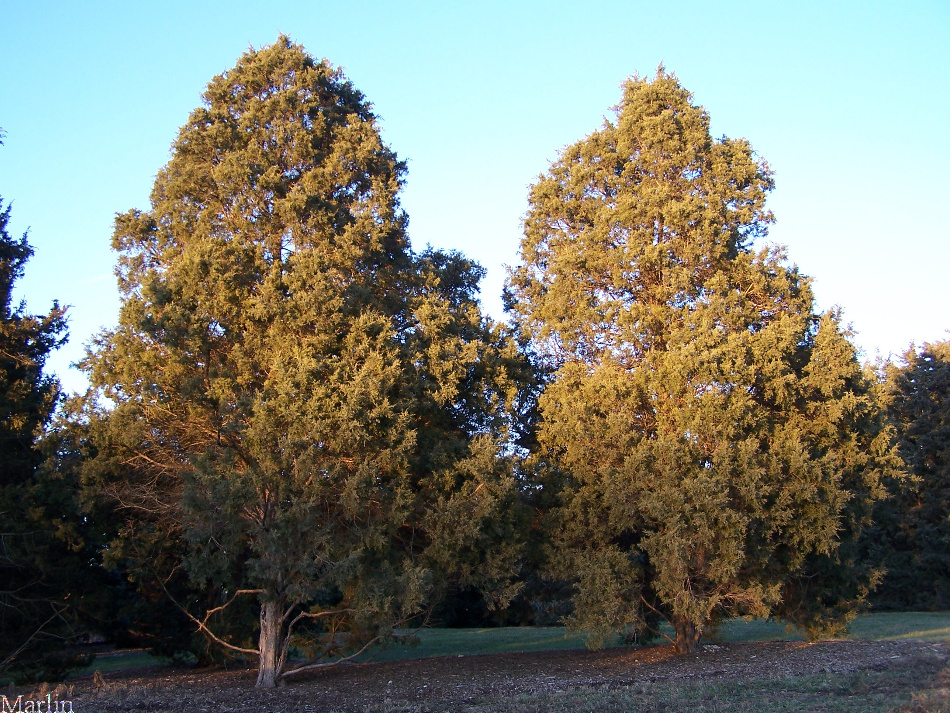Red Cedar – Juniperus virginiana

Family Cupressaceae
Also commonly called Cedar Tree, Juniper, savin, cedar apple, pencil cedar, or Virginia red cedar.
Red cedar is a slow-growing, narrow-leaved evergreen growing in a narrow pyramidal form to 45 feet. Native to North America east of the Rocky Mountains, and isolated populations in Oregon, this common tree was revered by Native Americans for its many and varied uses. Red cedar is a pioneer species and often volunteers in old fallow farm fields and waste places [1].
The evergreen tree is shaped like a pyramid or column, with reddish-brown to grayish colored bark that is fibrous and shedding. Branches are usually reddish-brown. Leave are opposite, simple, green or blue-green, closely appressed and overlapping the leaf above, scale-like, and 0.2-0.3 cm (1/16-1/8″) long or needlelike and 0.6-1.2 cm (1/4-1/2″) long. Male and female cones are on separate trees.
Red cedar is used by many Native American tribes for incense in purification and ritual. For them, red cedar symbolizes the tree of life and is burned in sweat lodges and in purification rites. The Blackfoot made a tea from the berries of the red cedar to stop vomiting. A Blackfoot remedy for arthritis and rheumatism was to boil red cedar leaves in water, add one-half teaspoon of turpentine, and when cooled, rub the mixture on affected parts. The Blackfoot also drank a tea made from red cedar root as a general tonic; mixed with Populus leaves this root tea became a liniment for stiff backs or backache.
Red cedar wood is very durable, and was used for lance shafts, bows, and other items. Flutes made from red cedar wood were highly regarded by the Cheyenne. Cedar boughs were used for bedding. The Menomini wove mats of cedar bark. The mats were used for roofing temporary structures, for partitions, floor mats and wraps.
Red cedar and other junipers are important to wildlife throughout the country. Their twigs and foliage are eaten by hoofed browsers, but the main attraction for wildlife is the fruit. The cedar waxwing is one of the principal users of red cedar berries, but numerous other birds and mammals make them an important part of their diet.
In addition to their wildlife food value, cedars provide important protective and nesting cover. Chipping sparrows, robins, song sparrows, and mockingbirds use these trees as one of their favorite nesting sites. Juncos, myrtle warblers, sparrows of various kinds, and other birds use the dense foliage as roosting cover. In winter, their dense protective shelter is especially valuable.
Red cedar, Morton Arboretum acc. 751-55-2, photos by Bruce Marlin
Family Cupressaceae
Trees Index | Pine Family




